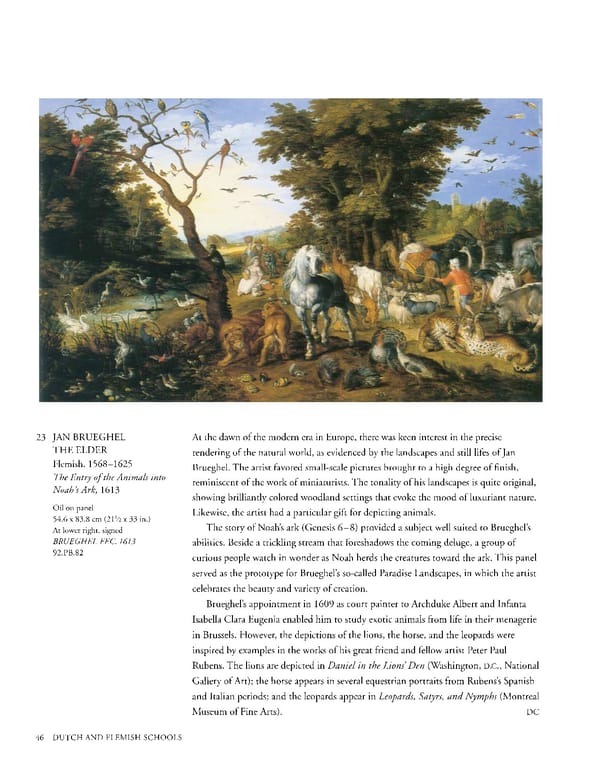23 JAN BRUEGHEL At the dawn of the modern era in Europe, there was keen interest in the precise THE ELDER rendering of the natural world, as evidenced by the landscapes and still lifes of Jan Flemish, 15681625 Brueghel. The artist favored smallscale pictures brought to a high degree of finish, The Entry of the Animals into reminiscent of the work of miniaturists. The tonality of his landscapes is quite original, Noah's Ark, 1613 showing brilliantly colored woodland settings that evoke the mood of luxuriant nature. Oil on panel Likewise, the artist had a particular gift for depicting animals. 54.6 x 83.8 cm (21½ x 33 in.) At lower right, signed The story of Noah's ark (Genesis 68) provided a subject well suited to Brueghel's BRUEGHEL FEC. 1613 abilities. Beside a trickling stream that foreshadows the coming deluge, a group of 92.PB.82 curious people watch in wonder as Noah herds the creatures toward the ark. This panel served as the prototype for Brueghel's socalled Paradise Landscapes, in which the artist celebrates the beauty and variety of creation. Brueghel's appointment in 1609 as court painter to Archduke Albert and Infanta Isabella Clara Eugenia enabled him to study exotic animals from life in their menagerie in Brussels. However, the depictions of the lions, the horse, and the leopards were inspired by examples in the works of his great friend and fellow artist Peter Paul Rubens. The lions are depicted in Daniel in the Lions' Den (Washington, D.C., National Gallery of Art); the horse appears in several equestrian portraits from Rubens's Spanish and Italian periods; and the leopards appear in Leopards, Satyrs, and Nymphs (Montreal Museum of Fine Arts). DC 46 DUTCH AND FLEMISH SCHOOLS
 Masterpieces of the Getty Museum: Paintings Page 46 Page 48
Masterpieces of the Getty Museum: Paintings Page 46 Page 48